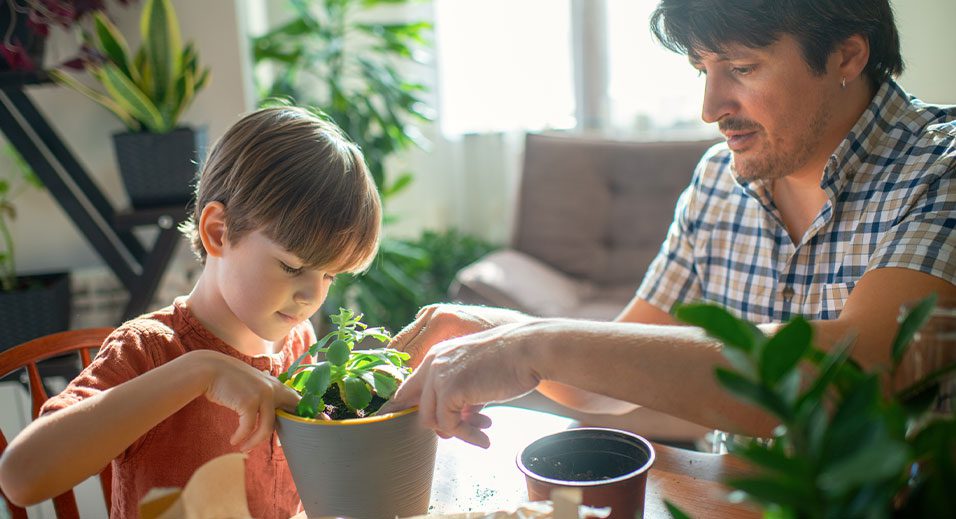This Earth Day, let’s empower our kids to make informed decisions about what they eat and build a meaningful connection between the food on their plates and where it comes from.
Food is essential to keeping us happy, healthy, and well nourished. But it’s also essential to make eco-conscious food choices in order to protect the planet that gives us our food! When we make an effort to understand and appreciate where our food comes from, we can enjoy our food more sustainably and spread the knowledge to those close to us too!
One way we can help educate those around us to protect the planet is by explaining the farm-to-table process. By involving kids in activities that highlight the food journey, we can empower them to make informed decisions about what they eat and its impact on the planet, as well as to grow an appreciation for where their food comes from. You can make it entertaining and interactive when you follow these five steps:
1. Understand what “going green” really means
The concept of “going green” can sometimes seem abstract to children. In fact, almost half of all Canadians are confused by environmental terminology, but learning together can be fun! Start by explaining in simple terms what it means to be environmentally friendly: reducing waste, conserving resources, and making mindful choices that are good for the Earth. Use examples that might resonate with them, such as turning off the faucet when brushing their teeth or bringing a reusable water bottle to school.
You can even use online tools, such as our own Green Glossary, to see simple definitions of terms like “carbon footprint” and learn about how the food we choose can help protect the planet.
2. Farmers’ market fun
Now that you know some environmental terms, take the kids on a trip to a local farmers’ market, and put sustainable shopping into practice! Introduce them to the people who dedicate their lives to growing healthy, nutritious food, from planting seeds and harvesting crops to raising animals and transporting produce.
Encourage kids to be curious and ask farmers questions about how they grow their produce or raise their animals. Discuss with them the benefits of buying locally grown food, like how it can help reduce carbon emissions from transportation, or how it supports local, smaller scale farmers.
You can also let the kids pick out some fruits and vegetables to bring home! Wrap up the trip by making a meaningful connection between the food on their plates and its origins.
3. Cook with the kids
Select some seasonal produce and pick a recipe you can cook with your kids’ help. Explain the positive impact behind choosing recipes that utilize local produce and minimally processed foods.
As you cook, teach the kids about portion sizes and how they can avoid food waste by only cooking what you need and saving leftovers for later. For kids that show strong interest in being in the kitchen, you can even talk with them about how certain cooking methods, like baking or steaming, can be more energy-efficient than others.
Be creative to reduce food waste! Asparagus is a great example of a spring vegetable rich in vitamins and minerals that works with eggs for breakfast, in soup or salad for lunch, and as a fresh side at dinnertime.
4. Create your own compost
Food can have an environmental impact, even when dinner is finished. Why not show kids how food scraps can be turned into nutrient-rich soil through composting? Make a DIY compost bin using an old tote. Add some dirt to the bottom and throw in peelings and food scraps leftover from meals. Encourage your children to take turns adding kitchen scraps like fruit peels, vegetable trimmings, and coffee grounds to the compost pile to create a rich soil for your garden while putting leftover food to good use!
5. Plant an herb garden
Put your new, nutritious soil to the test! Start by planting an herb garden together, either in pots on a windowsill or in a small outdoor plot. Choose easy-to-grow herbs like basil, mint, or chives. Teach the kids how plants need sunlight, water, and nutrients from the soil to grow. Then wait and let the magic happen!
As the herbs begin to flourish, you can even begin incorporating them into meals you cook together, further reinforcing the connection between gardening and eating sustainably. This activity is a valuable and perfect full-circle moment for kids to understand where their food comes from and is a great way to introduce them to growing their own food!
This Earth Day let’s take action and bring home the notion of sustainable food. By involving children in these simple yet impactful activities, we can help them develop a deeper understanding of the planet’s food system and inspire them to make environmentally conscious choices. Through hands-on experiences and meaningful conversations, we can empower the next generation to become sustainability leaders of the planet and advocates for a more sustainable food system – this Earth Day, and for many years to come!




